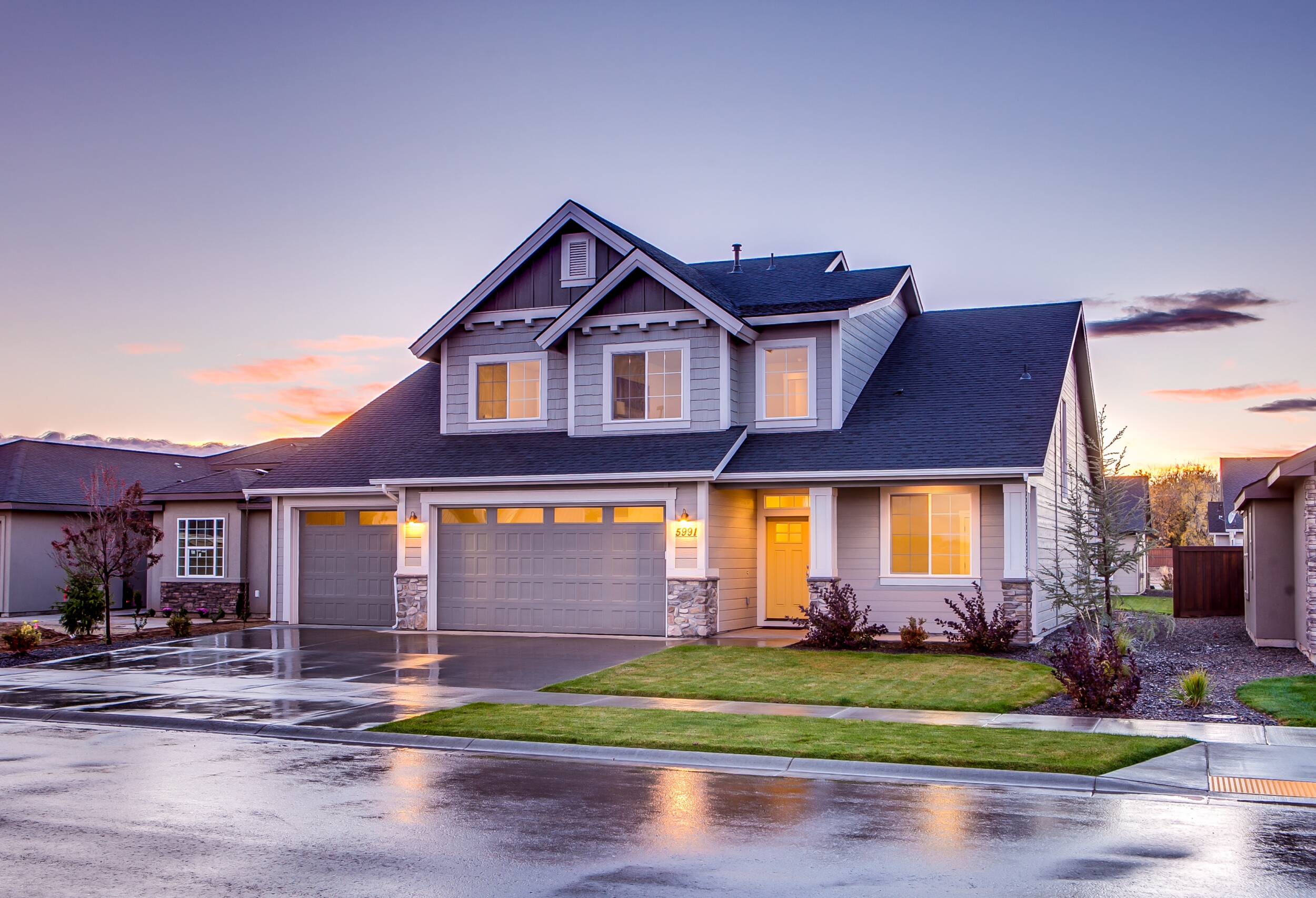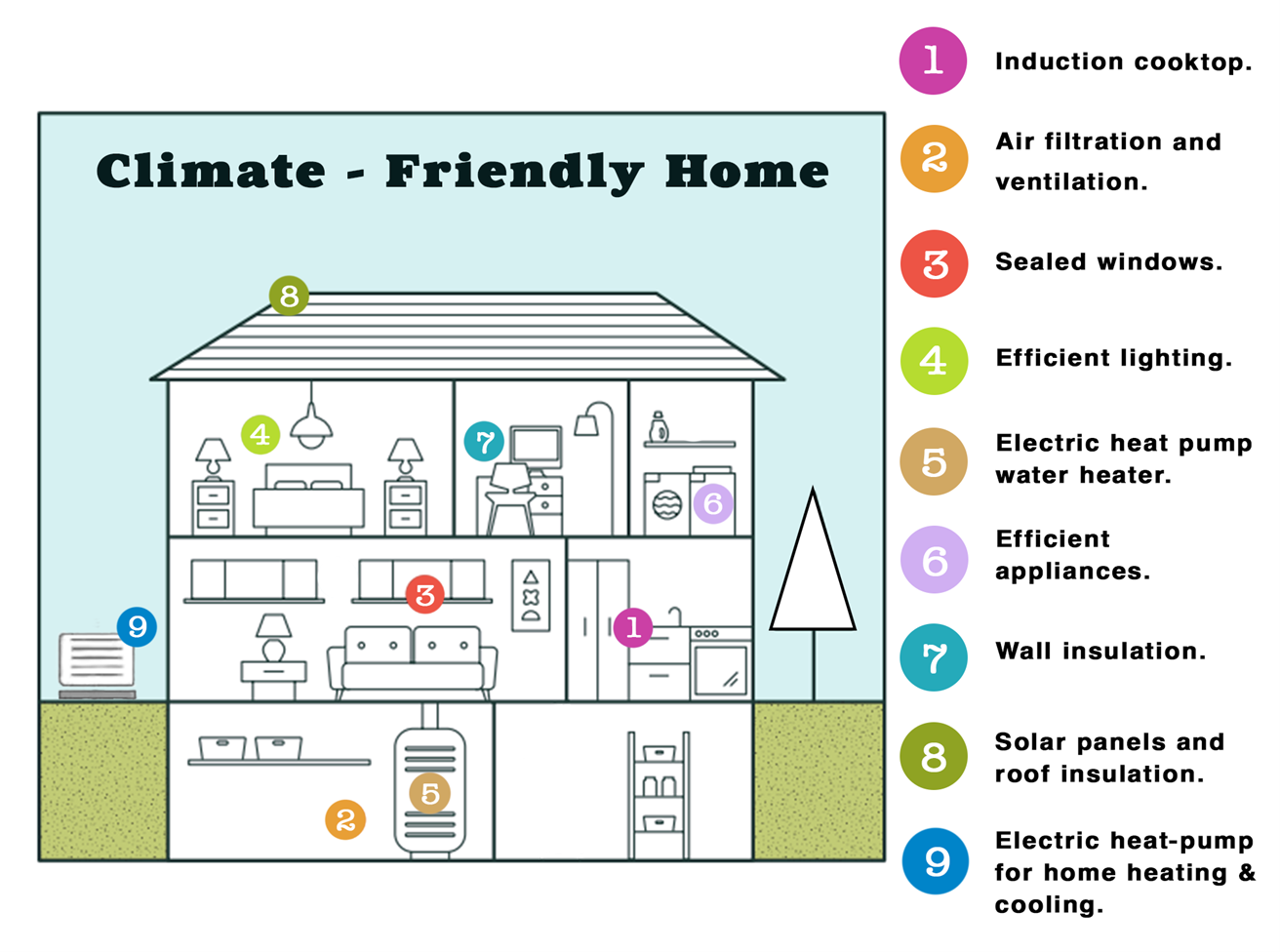
By Eric Miller – 8/4/23
Energy Saving Series Recap: Four Ways That You Can Keep Your Energy Bill from Rising with the Temperatures this Summer
If you are a member of The Energy Co-op, you may remember receiving our Energy Saving Series throughout July, in which we highlighted a new tip each week to make sure your energy bill doesn’t rise along with the temperatures. To make this information more readily accessible for both members of The Energy Co-op and our wider community, we have consolidated the information presented in our July Energy Saving Series and put it here, in our blog. From installing a heat pump and making your kitchen more energy efficient, to conducting weatherization projects and making your home greener with IRA tax incentives, there are plenty of projects both big and small for you to work on this summer to keep your energy consumption and energy bill lower!
Installing a Heat Pump
Heat pumps are heating and cooling systems that can be up to four times more efficient than fossil fuel furnaces. In the summer, heat pumps work by moving warm air from your house outside. In the winter, heat pumps act as “an air conditioner in reverse” and pump warm air from the ground or outside air into your house.
According to National Grid, over 40% of global emissions come from buildings, and most of these emissions result from heating or cooling our homes and businesses with fossil fuels. Heat pumps are a crucial part of increased electrification, and as a result, a crucial part of tackling climate change and reducing global emissions.
Heat pumps aren’t just a great way to reduce carbon emissions and conserve energy, they can also contribute to lowering your annual household expenses. According to Penn Environment, you can expect long term utility bill savings by installing a heat pump, with the average homeowner saving nearly $700 yearly. And thanks to new federal legislation, if you install a high efficiency heat pump, you are eligible for a federal tax credit for up to 30% of the unit’s cost.
To learn more about heat pumps, how they work, their importance, and their obstacles to widespread adoption, check out this great video from Vox!
Energy Efficiency in The Kitchen
Next, let’s talk about the top ways that you can save energy in the kitchen. Broadly speaking, energy savings in the kitchen can be attained across three key areas: habits, cooking methods, and appliances.
Rethink your kitchen habits
It does not require significant effort or money to get started saving energy in the kitchen, and the first place we can all easily address is our kitchen habits. Little things like letting leftovers cool before placing them in the refrigerator, loading the dishwasher fully before running it, or reducing the amount of time that the refrigerator is opened can all add up over time and reduce your energy bill and your carbon footprint.
Change your cooking methods
One of the biggest barriers to keeping the home cool in the summer is right in the center of many kitchens — the oven. Using an oven can raise the indoor temperature by a few degrees, causing air conditioners, fans, or other cooling appliances to work even harder to cool down your home. When possible, opt for a toaster oven, an air fryer, or even the perfect summer cooking companion — the outdoor grill! Additionally, little things like covering pots and pans while cooking or using an electric kettle instead of running hot water can go a long way towards decreasing your energy consumption as well.
Evaluate your appliances
And that brings us to the biggest energy conscious change that you can make in your kitchen: evaluating your appliances and making sure that they are energy efficient. When purchasing a new appliance, be mindful of its energy efficiency, and look for appliances with the ENERGY STAR label on them, which means that appliance meets or exceeds federal efficiency standards. While updating your appliances can be a great way to reduce energy usage, it can be quite costly. If replacing your oven, refrigerator, and dishwasher all at once is not feasible, try a long-term replacement approach, or consider small appliance upgrades like ensuring your refrigerator and oven are properly sealed.
To learn more about how to save energy in the kitchen or get started on some of these projects yourself, check out this great resource from the Department of Energy. Additionally, you can check out this excellent Member-to-Member Webinar presented by Energy Co-op member Phil Coleman on lowering your energy bill and reducing your carbon footprint.
Using the Inflation Reduction Act’s Tax Credits to Make your Home More Energy Efficient
If you are a member of one of The Energy Co-op’s renewable programs, you are already mindful of your home’s carbon footprint. But did you know that there are countless other ways to make your home more climate friendly too? Thanks to new legislation and initiatives at the local, state, and federal level, you can even get a tax credit or financial support to make these additions to your home.
Whether you are looking to install a heat pump, rooftop solar, or get a discounted home energy efficiency audit, there are many actions you can take. As we enter the dog days of summer, check out some of these great tips from The City of Philadelphia’s Office of Sustainability to prevent your energy bill from rising along with the temperatures.

(Phila. Office of Sustainability)
Home Weatherization
And finally, let’s discuss weatherizing your home in the summer months. Home weatherization is a broad process to protect a home’s interior from outside elements like moisture, cold air in the winter, and hot air in the summer. For our purposes here, we will just focus on the last one. Whether you are a member of The Energy Co-op enrolled in our renewable electricity program or source your electricity from a different supplier, summer home weatherization is a fantastic way for you to decrease your energy usage and your electricity bill.
If you are hesitant at the price tag of some of the climate friendly home upgrades covered above, and a new heat pump, new energy efficient windows, or new appliances are not in your budget this year, simple weatherization projects can be a low-cost way to achieve some of the same goals for a fraction of the price. Easy and low-cost tasks like installing weather strips, replacing old lightbulbs with energy efficient ones, or purchasing a programmable thermostat can go a long way in keeping your energy bill lower this summer.
If you’re ready to get started on some basic weatherization projects that you can do yourself, check out this great video from the National Trust for Historic Preservation, or learn more about Pennsylvania’s Weatherization Assistance Program. Thank you for reading our Energy Saving Series recap! We hope you have found valuable insights and actionable tips to make your home more energy-efficient and climate-friendly.